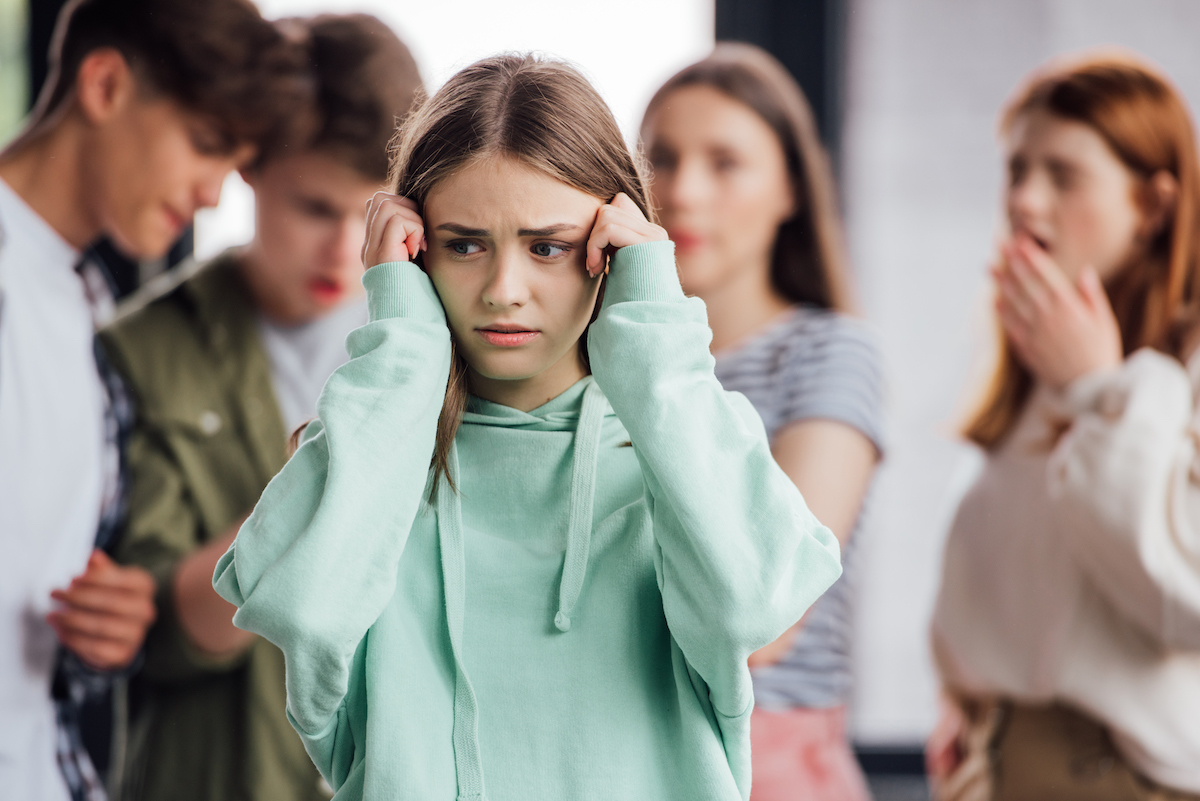The shooting at Oxford High School in Michigan on November 30, 2021 was the deadliest school shooting since 2018. A 15-year-old high school student killed four students and injured several others. His parents were aware that he had recently appeared sadder. His only friend had moved away. He had been torturing animals. All of these warning signs were ignored, with many using the excuse that he had no prior disciplinary actions on his record. When he scribbled ominous messages on his classwork, his parents were advised by the school to seek counseling for him within 48 hours, but it was too late. The negative thoughts and behaviors had already escalated into an unimaginable act of violence, destroying the lives of so many.
When it comes to school violence, any student behavior that is out of the ordinary can potentially be considered a red flag. You should be in tune to what your students are saying, thinking, and feeling. With many schools having a large student body, it can seem overwhelming. Therefore, it’s important to establish a preventative approach to violence and to work as a school community to ensure mental health for all. Even when the best effort is put forward in this respect, students may still exhibit red flags and it is important that they are noticed and addressed immediately.
Let’s examine 3 red flags you should never ignore:
- Direct threats, bullying, or other aggressive behavior
For years, students have had disagreements and when handled appropriately, differing opinions can be healthy. Unfortunately, altercations are often one-sided, with one student being bullied. So what can you do to stop students from engaging in this negative behavior? Your best resource is probably other students. Children are often very in tune to their peers and can play a large role in stopping violence before it starts. They are our biggest eyes and ears when it comes to noticing warning signs inside and outside of the classroom—especially on social media. You should make every effort to educate the students about warning signs and encourage them to say something if they see something.
It’s human nature to not want to face backlash from reporting the negative behavior. It’s important for you to establish a way for students to anonymously report threats, bullying, or other aggressive behavior. CrisisGo’s Safe2SpeakUp app can be used as the first step in the early warning and identification process. Students can anonymously report bully-related activity and threats and concerning behaviors. They can message with the school’s safety team and also with groups that their school district has granted them permission to access. The safety team would then follow up on these reports in an effort to find an appropriate approach to helping the aggressive student.
- Acting withdrawn or choosing social isolation
When a child becomes socially detached from peers, it’s hard to know what the student may be thinking or plotting. In a study of active shooters, 77% spent a week or longer planning their attack. The students may have felt wronged by someone and felt the need for revenge.
You should establish a team of school administrators, mental health professionals, and school resource officers to identify, assess, and manage potentially dangerous and violent situations by using behavioral threat assessment and management. This fact-based, systematic process is crucial for all organizations in the fight for safety. Documentation is critical to establishing a pattern of behavior that can be assessed. An innovative idea is to digitize the threat assessment information for better access and organization, which you can easily do with CrisisGo’s Safety Intervention Manager, our behavioral risk assessment, reporting, and intervention tool.
- Obsession with guns and violence
Many school shooters become obsessed with guns and violence prior to their attacks. They start to research ways to carry out their plan. They study previous school shooter incidents, for example. Unfortunately, 39% of parents wrongly believe their gun is hidden from their children, but the children do in fact know where it is stored. This creates a dangerous situation as the children often end up using a gun found in their own home or a relative’s home in order to commit violent acts. Some attackers even go so far as to make their own weapons.
We need to get the whole community—school personnel, parents, family members, friends, law enforcement, mental health professionals—involved in protecting the mental health of everyone. Several states have passed laws limiting access to guns when authorities receive warnings such as mental illness or a history of violent crimes or domestic attacks. Once at-risk students leave the school system, they may still be prone to violent behaviors. It’s important that more businesses are up-to-date with mental health awareness strategies for employees, such as using CrisisGo’s versatile Safety Intervention Manager in a business sense.
While there are no guarantees with completely preventing violent attacks, action and follow-up gives us the best opportunity to redirect a person from the pathway to violence and to at least identify a better path for that person. Anything you see as a potential threat or odd behavior must be reported—nothing should be ignored. It’s better to report and assess than to later regret not doing it. You can use tools such as CrisisGo’s Safe2SpeakUp app and Safety Intervention Manager to make it easy to document information often. Stay proactive by giving students ways to express themselves and to track their feelings in order to build emotional intelligence. Refer them to professionals who can help them to sort through any negative feelings that they recognize. If you have any inkling that the preventative approach is failing, look around for some red flags. Then, look even more closely as some are sure to be hiding in plain sight. The better we are at tuning in to the status of each other’s mental health, the safer we will all be.












No Comments Yet
Let us know what you think